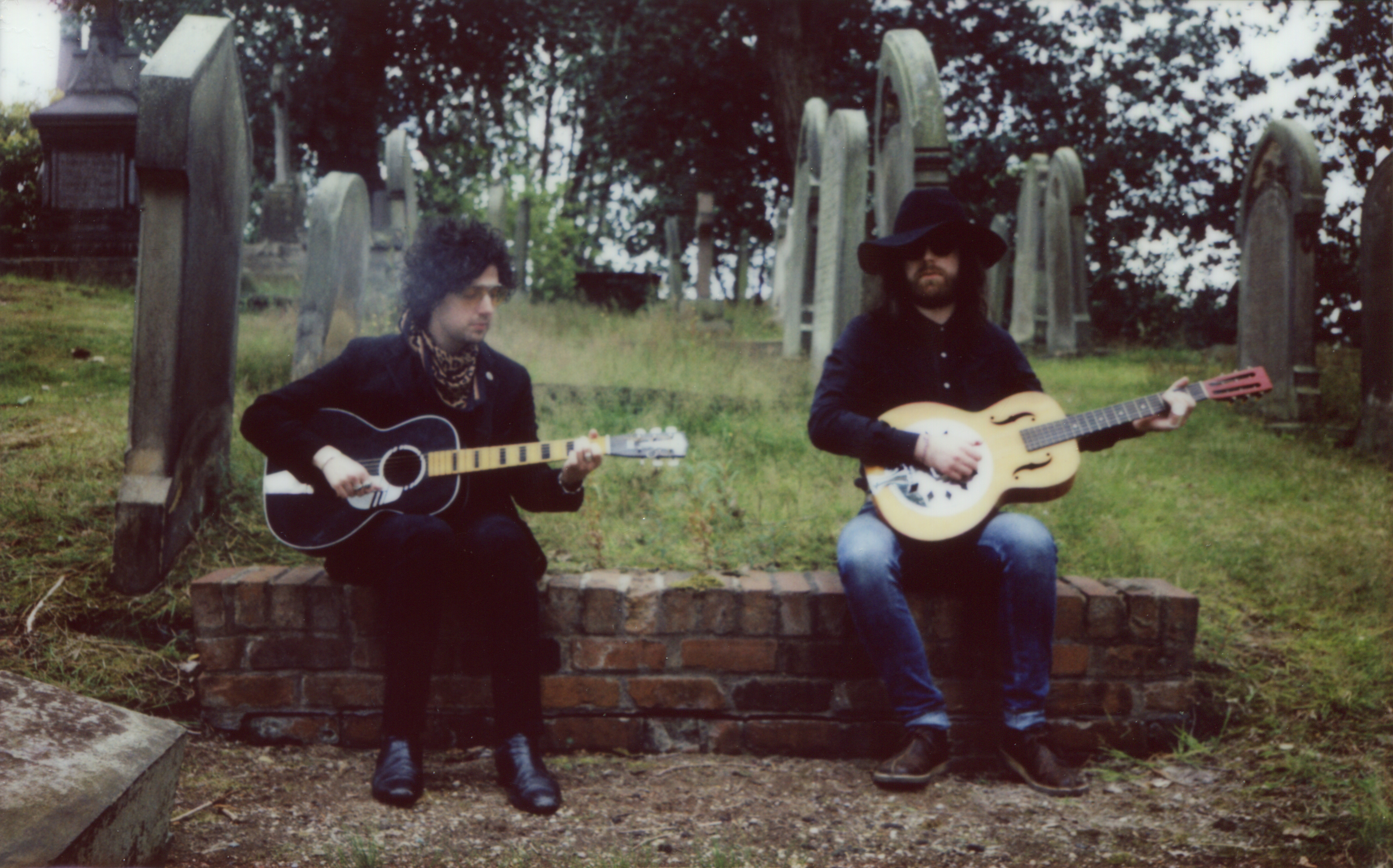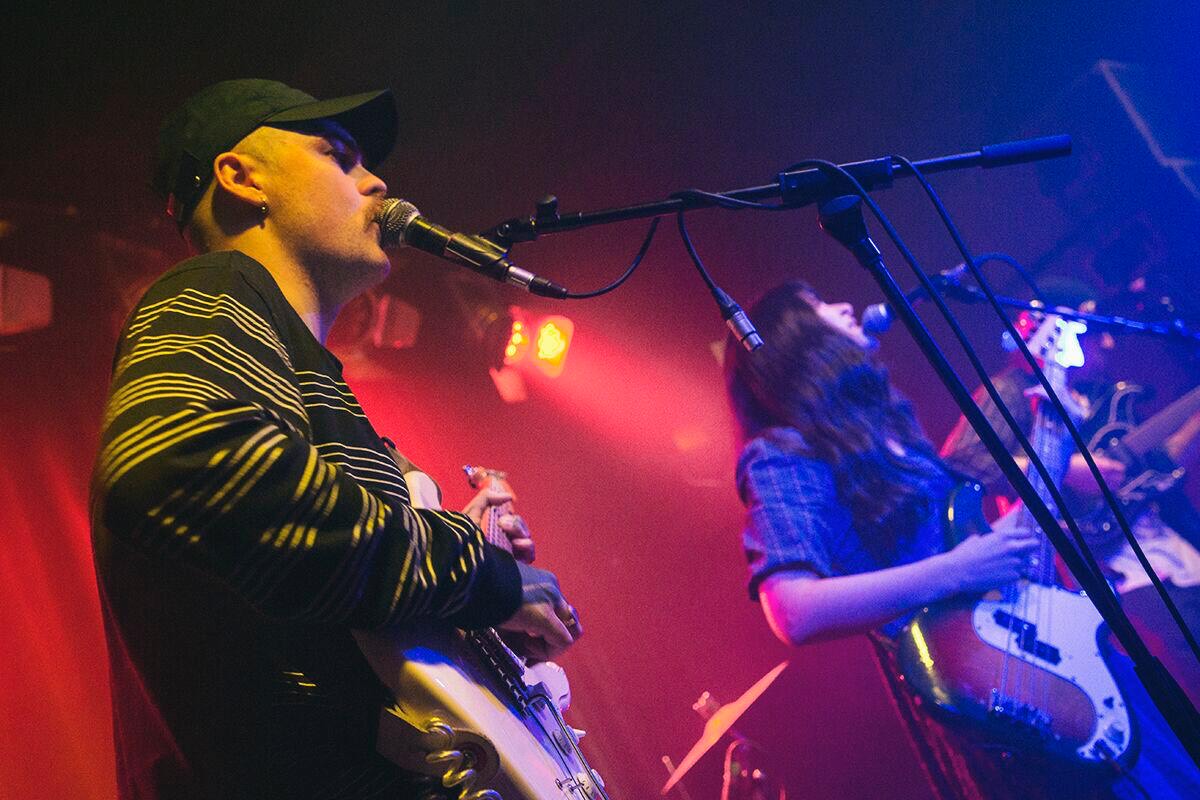As we wring our hands in anticipation for our potential re-opening come April, let’s tide ourselves over with further tales of guitary goodness from some of Brum’s finest. This week, it’s post-punk-turned-troubadour Rick Wellings of Faux Palms
The first time I saw Rick play I remember two main things- a) that it was incredibly hot, and that he seemed like some sort of glistening, heat-crazed lizardman, punching out riffs on a wonderful double-bound Tele as frontman of his previous outfit The Bombergs and b) that even then, as a 22 year-old man- young by most measures- I felt positively ancient as main support Jaws then took the stage and their relentlessly underage fans started acting like recently uncaged animals. It was 2013 and ‘B-Town’ was in full swing- that somewhat forced movement with a saccharine, major-label sheen that seemed to betray its Mcat-fuelled origins. But Rick’s intensity that night stuck with me- his wide-eyed, maniacal stage presence being the perfect antidote to the forced jollity otherwise rife at the time. However, time goes on, bands break up, artists shapeshift. With Faux Palms, Rick harkens back to the cosmic Americana first envisioned by Gram Parsons and filtered through the greats like Neil Young, Gene Clark and even modern-day folkies like Kurt Vile and Fruit Bats. Far from being a tech-head, being focused more on the craft of songwriting, Rick nonetheless knows his onions when it comes to what works and what doesn’t. With an album due this year, keep your eyes on this one.
Talk us through your guitar history from your first to your most recent.
“The first guitar that I owned was Crafter Ovation copy with a weird English rose
figure over the soundhole. It looked horrible; but sounded alright and it had quite a
thin neck, so for somebody starting out it was really easy to play.
That was all I had through sixth form and uni, and then straight after uni, I got a
Mapleglo Rickenbacker 330. I still love the art deco styling of Rickenbackers, but
ultimately, I realised that it wasn’t the right instrument for me.
After a bit of trial and error, I realised that I’m basically a Fender man. After using a
Classic Vibe tele with Bareknuckle pickups for a long time, I’ve ended up with a
Silvertone 1478 and a Burns SSJ. Both are variations on the Fender single coil
sounds that I tend to prefer. The Silvertone is a reissue of an old catalogue shop
guitar from the 60’s, that I think was pitched at kids that wanted a Jazzmaster, but
couldn’t talk their parents into spending that much money. The Burns is essentially a
two pickup, short scale strat.
I also play a lot of acoustic guitar. I’ve got a Fender Paramount, which is a bit like a
Martin dreadnought and a Guild M120, which is a reissue of the old concert style
guitar that Nick Drake used to play. In a fire, that’s the one I’d save. It’s all
mahogany, so it sounds really flat with almost no treble. It’s a good song writing
guitar.”
Who inspired you to pick up guitar, and who inspires you to keep on playing
today?
“My Dad and my brother both play guitar, and there were always guitars at home, so I
just sort of picked it up. I’ve never had the dexterity to play lead, so I’ve always been
drawn to people doing interesting rhythmic stuff. I like things like the second Velvets
record, Wilko Johnson, Andy Gill.
I’ve loved the last couple of This Is The Kit records. Songs like ‘Moonshine Freeze’
and ‘Hotter Colder’ have exactly the kind of rhythmic ticks that I’m always drawn to.”
Tell us about your music, and how you approach your guitar playing within the
context of it.
“The way that Faux Palms sound is informed by a lot of stuff that could loosely be
called folk or Americana, but at the same time, we like a lot of angular post-punk
stuff. I think we oscillate between quite pretty songs, and songs that sound more off
kilter. For me, the ultimate guitar song would be something like ‘Shoot Out The Lights’
by Richard Thompson.
I won’t pretend that I’m much of a guitarist, but I’m good at one thing, which is the
specific style of rhythm guitar that I play. I’d principally think of myself as a singer-
songwriter, and the guitar playing really just supports the delivery of the songs.
That said, I’ve used the time during lockdown to give a lot more thought to guitar
sounds, in a way that I hadn’t really before.”
What setup are you currently running, amp and pedal wise?
“I’ve got a Fender Tone Master Deluxe Reverb. I live in Victorian mid terrace, and I
don’t run a car, so having something that’s lightweight, portable and can be used
quietly is perfect! I A/B’d one against a 65 reissue Deluxe Reverb, and it’s a really
good reproduction of the sound of that amp.
I never bothered with pedals in the past, but like I say, I’ve been giving a lot more
thought to guitar sounds over the last year. I got a lot of good advice about pedals
from Pete Dixon from SFL and Ed Taylor from our band. They’re both really
knowledgeable about what different pedals can do, and which brands make the best
stuff.
At the moment, I’ve got a little mini board with a Nobels ODR mini, an Xvive
Echoman, a Mooer E-Lady and a TC Electronic Spark. The Echoman is weird cos it
was designed by Howard Davis, who apparently designed one of the most popular
Deluxe Memory Mans in the late 70’s, so he’s sort of cloned his own pedal!”
What’s the one pedal that you couldn’t live without?
“The one that I really like is that Nobels ODR overdrive. I like the way that you can go
from just at the point of breakup to something really driven.”
What’s your current main guitar, and why so?
“I’m mostly playing electric guitar at the moment. I don’t really have a preference, the
Silvertone and the Burns are both cool. It’s nice to have a pair of guitars that do
slightly different things, but both feel really comfortable. I’ve never really had that”
before.”
Are there any other local guitarists you particularly admire?
“My brother, Andrew Wellings, is always doing interesting stuff. He’s got an unusual
approach to the instrument, lots of strange chords that you haven’t heard before and
rhythmic ideas that can really make a song. He’s absorbed a variety of influences;
and ended up with his own thing.”
If you could play any venue anywhere in the world tomorrow, where would it
be and why?
“Right now, I’d be happy to pitch up round the corner at the Hare & Hounds! I walk
past the pub virtually every day, and it’s sad that everything’s ground a halt for the
moment. I’ve seen a lot of my favourite shows at small venues like the Hare.”
Where can we find your music?
“We have a single up on Spotify and all of the other main streaming platforms.
The thing that I’m really excited about though, is a full-length album that we’ve been
working on with Tom Livemore. Tom did the last SFL and Burning Alms records,
which were both great.
The album is easily the most complete thing that I’ve ever worked on. Ed, Andrew,
Martin (Cleveley – drums) and David (Pendril Bentall- bass) have all played on the
record. I don’t put bets on anything anymore, but it should it be out later this year.”


















